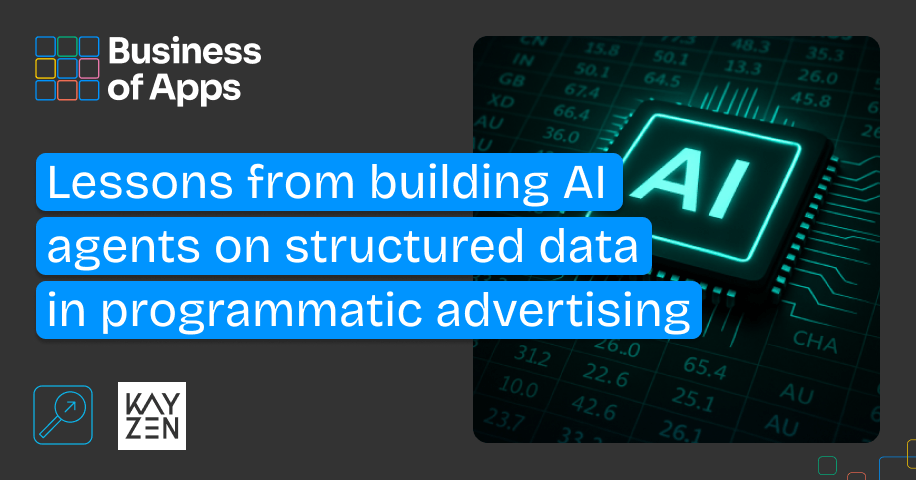Apple has a long history of disrupting existing business models. From the introduction of iTunes to the creation of the smartphone, the tech giant is no stranger to creating entirely new paradigms. And they did it again in 2020, with the introduction of App Tracking Transparency (ATT), which completely changed mobile marketing as we know it. Despite months of speculation, followed by months of testing and strategizing, it’s still unclear exactly how ATT and other privacy centric changes introduced in iOS 14.5+ will impact mobile marketing.
With that said, I wanted to offer some thoughts on the opportunities and challenges ATT presents, as well as what app marketers should be thinking about as they adjust to a privacy-centric future.
What is ATT?
To quickly recap, ATT is a privacy-focused framework that Apple has implemented for iOS apps. It requires developers to seek permission from their users in order to share user data with other companies and apps. It centers around a unique identifier that every iOS device has called the IDFA (Identifier for Advertisers). If a user does not give permission to a given app to share their data, then the app developer cannot access the IDFA of that device. Without that, the app developer cannot attribute installs and in-app user behavior back to a particular marketing campaign using the IDFA. This eliminates what is generally referred to as deterministic attribution — or the ability to know with certainty which marketing channel led to an install or in-app event.
At the same time, Apple also released a framework called SKAdNetwork (also known as StoreKit Ad Network or SKAN). This allows marketers and ad platforms to perform deterministic attribution but in a purely anonymized way that does not require IDFA. (Take a deep dive into SKAN here.)
How ATT impacts mobile marketing optimization
The good news is, IDFA isn’t the be-all and end-all of mobile marketing optimization. I repeat, mobile marketers can still optimize their ad spend without IDFA. How you approach this challenge will need to change, however. Which business you’re in will determine whether you are helped or hindered by the deprecation of IDFA.
The types of businesses that will suffer without IDFA are:
- Whale-driven apps that monetize through in-app purchases (IAP) — The most common type of app in this category are games where a few paying users subsidize a lot of non-paying users. If your business model and marketing rely on knowing exactly what users pay and finding more users just like them, then not having IDFA or deterministic attribution fundamentally inhibits your ability to succeed.
- Ad platforms that cater to the above-mentioned apps and rely on sharing data across apps — In other words, Facebook, ad networks, and managed DSPs whose entire business models rely on sharing user data between apps and other vendors. No IDFA means no data sharing across apps, and that means that the ability to find whales (or any kind of specific user) will be much harder.
The types of business that stand to benefit from IDFA deprecation are:
- Apps where a significant number of users convert to payers and the payment happens relatively close to the install — I’m looking at you subscription businesses (say, Netflix or fitness apps), but there are many others. A broader paying user base that pays shortly after installing your app means that your marketing optimization (and business model) do not rely on finding a small pool of high-paying users. Basically, you have more useful revenue data to analyze and use for marketing decisions.
- Ad platforms that accurately relate install and revenue data back to contextual signals like device type or publisher app — Lots of revenue data linked back to contextual signals means that these ad platforms can optimize marketing spend based on profiles of users and pockets of inventory that reflect those profiles. They do not rely on identifying and targeting the best users of other apps. Leveraging AI and ML for buying models will be a competitive advantage.
Businesses that don’t rely heavily on IDFA have more opportunities to optimize marketing campaigns in a way that drives revenue for the advertising app (and therefore the ad platform running the campaigns). If you can say that iOS users in these 10 countries will generate X number of installs and that a meaningful percentage of those installs will make a purchase quickly, then you have a fundamental advantage relative to an app that needs to spend millions of dollars and generate millions of installs just to cherry-pick a few thousand paying users.
This kind of context-based marketing is more old-school and still prevalent outside of the mobile world. It requires you to understand the profile of your user base and find channels and partners that help you reach those profiles. In a broader historical context, the last 10 years of mobile advertising have been a blip on the radar, not the future of marketing. It came at the expense of user privacy and resulted in whale-driven IAP-based apps. Those days are probably done.
Preparing for SKAN
So what should mobile marketers do as the new SKAN framework becomes the norm for marketing on iOS?
SKAN strategies for the short term
- Focus on platforms that help you learn SKAN rather than doing it for you. Whatever knowledge ad tech companies have accumulated over the last 10 years of mobile marketing has been partially rendered irrelevant. Now is the time to learn this new paradigm for yourself.
- Get the right contextual data. Knowing the publisher apps your users are coming from is a strong contextual signal. SKAN postbacks you get from your partners should include this. Starting with iOS15, postbacks can be sent to advertisers directly, so you won’t have to rely on partners to provide it. Try to get your hands on this data.
- Conversion goals need to be as close to the install as possible — and, at least for a while, may just need to be the install. Be comfortable running CPI campaigns from now into next year.
SKAN strategies for the medium term
- AI and ML need to shift from user targeting to contextual targeting. ML models rely on past data to calculate the probability that a given impression will result in an install or in-app conversion. If the data is based predominantly on knowing the past behavior of a specific user, then you won’t have access to this anymore. ML outputs need to be based on contextual signals included in or modeled from the bid stream (or metadata that is drawn from that).
SKAN strategies for the long term
- Change your business model so it isn’t whale-driven. The closer your monetization is to the install, the easier iOS marketing will be. If you can become a subscription business, do it.
- Foster deeper relationships with your best marketing channels. In a programmatic context, know what exchanges and publishers drive results for you. Optimize your supply path to reach these channels. Do direct deals with publishers and establish direct relationships with exchanges. Don’t use ad tech middlemen to do the heavy lifting and retain all the knowledge. Make your marketing team a mean, fighting machine.
- Know your user. If you can get first party data on your users (say, demographics) and use that to find advertising inventory with the same profile, you’ll be in better shape than those that can’t. Even without demographics, there is a wealth of data in programmatic bid streams that would allow you to do this. Find ways to get that data and adapt your AI/ML to use it.
ATT and SKAN have altered mobile marketing for good — and deterministically finding specific users will soon no longer be the best path to optimizing your marketing spend. Apple is clearly willing to inconvenience businesses that rely on IDFA in the name of user privacy. Considering the damage Facebook’s reputation has taken on the privacy front, Apple is probably on the right side of history here, and Google will likely follow suit (in fact, it already is — kind of). App developers that recognize this and shift their business models away from whale-driven IAP monetization will be better prepared to use contextual data and user profiling to drive optimization. Those that use AI/ML to optimize while executing well on Business Development to find the right partners and cut out ad tech middlemen will be the new kings of the app economy going forward.



